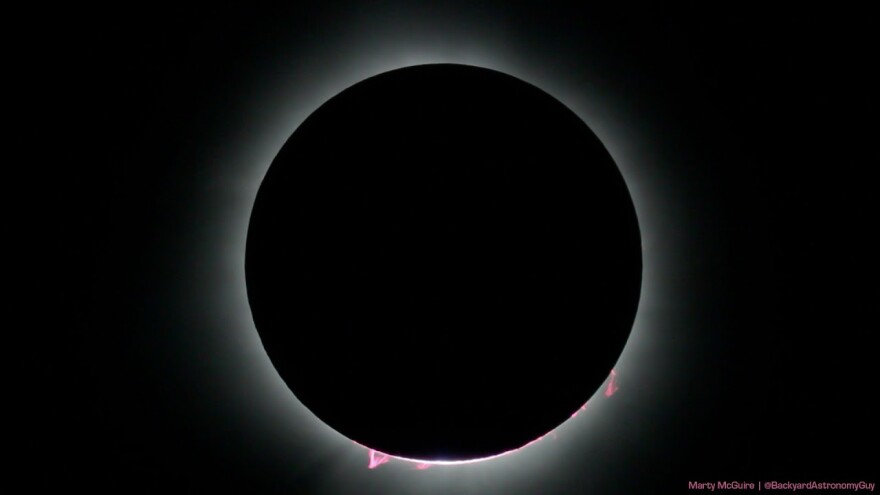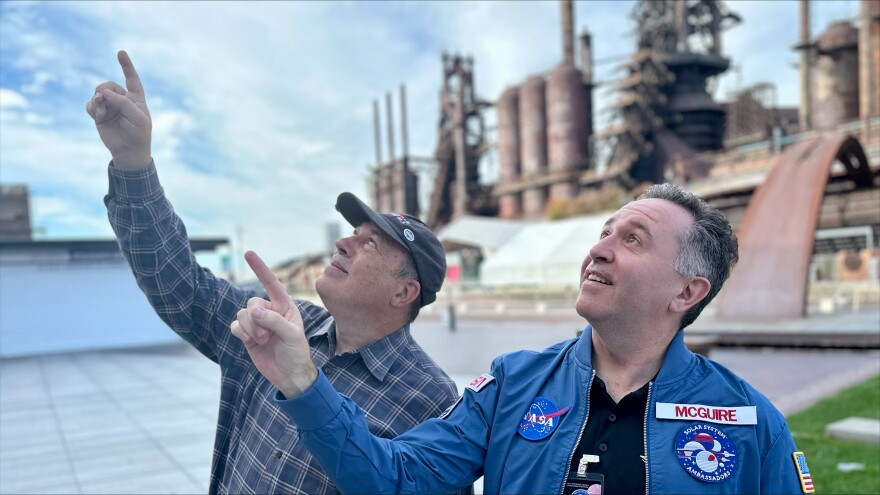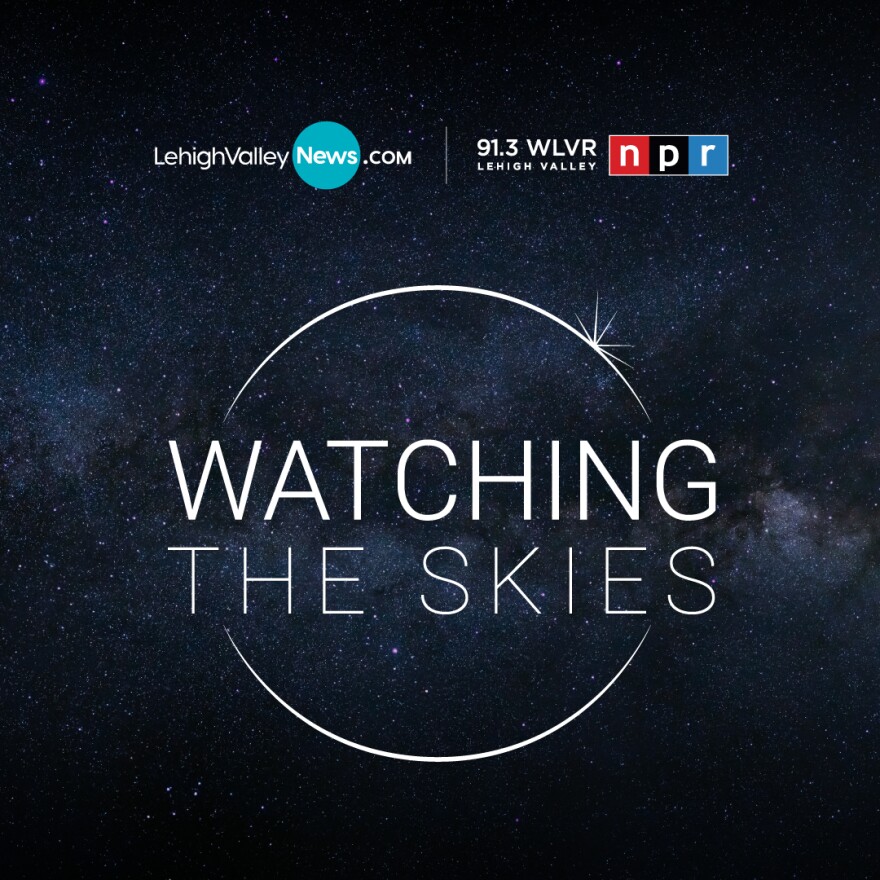BETHLEHEM, Pa. — Brad Klein reviews upcoming astronomical highlights with Bethlehem’s "Backyard Astronomy Guy" Marty McGuire.
This week, a look back at two highlights of 2024; Marty’s trip to upstate New York for a total eclipse of the sun, and his exploration of some of the most detailed photos ever taken of the moon’s surface.

The April 8th total eclipse of the sun was a once-in-a-lifetime experience. But everything depended on where in North America you were trying to observe the event, and the cloud cover at the moment of totality. McGuire decided to leave his options open until the last minute with an eye on the weather forecast during the days and hours before the eclipse.
“A the very last minute,” he said, he opted to join “a couple thousand people in Tupper Lake, New York.” The decision proved to be a good one. While the Lehigh Valley had a view of a partial solar eclipse seen through drifting cloud cover, skies were clear over Tupper Lake. And, most important of all, McGuire found himself in the direct path of totality.
“It was an amazing eclipse event. And I got to meet lots of amazing people,” he said.

Another highlight of the year did not require the amateur astronomer to travel, but it did require sifting through vast amounts of data from photographs gathered by India’s space program.
The Indian Space Research Organization [ISRO] deployed a lunar orbiter in 2019, according to McGuire. That orbiter, Chandrayaan-2, captured detailed photos of the Moon’s surface, and by carefully sorting through the massive public archive of digital files, McGuire was able to locate images of the first two Apollo landers to set humans on the moon.
Those photos clearly show the ‘descent stage’ of the Apollo 11 and 12 lunar landers left behind after astronauts Buzz Aldrin, Neil Armstrong, Pete Conrad, and Alan Bean walked on the moon in 1969.



